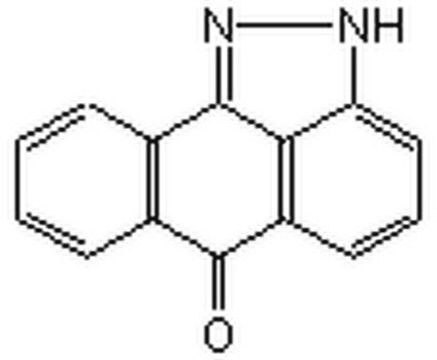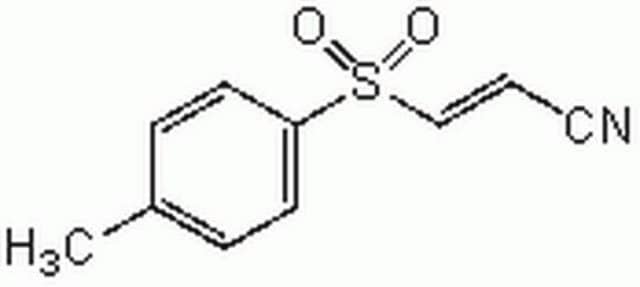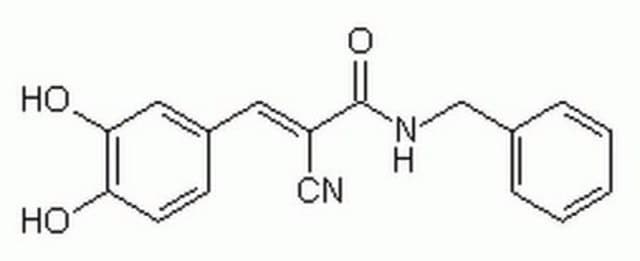513000
PD 98059
≥98% (HPLC), solid, MEK inhibitor, Calbiochem®
Sinónimos:
PD 98059, 2ʹ-Amino-3ʹ-methoxyflavone, MEK Inhibitor V
About This Item
Productos recomendados
product name
PD 98059, PD 98059, CAS 167869-21-8, is a cell-permeable, selective & reversible inhibitor of MAP Kinase Kinase (MEK). Inhibits MAP Kinase activation and subsequent phosphorylation of MAP Kinase substrates.
Quality Level
assay
≥98% (HPLC)
form
solid
manufacturer/tradename
Calbiochem®
storage condition
OK to freeze
protect from light
color
pale yellow
solubility
methanol: 0.7 mg/mL
DMSO: 20 mg/mL
shipped in
ambient
storage temp.
−20°C
InChI
1S/C16H13NO3/c1-19-14-8-4-6-11(16(14)17)15-9-12(18)10-5-2-3-7-13(10)20-15/h2-9H,17H2,1H3
InChI key
QFWCYNPOPKQOKV-UHFFFAOYSA-N
General description
Biochem/physiol Actions
MAP kinase kinase (MEK)
Warning
Reconstitution
Other Notes
Kültz, D., et al. 1998. J. Biol. Chem. 273, 13645.
Dudley, D.T., et al. 1995. Proc. Natl. Acad. Sci. USA92, 7686.
Langlois, W.J., et al. 1995. J. Biol. Chem. 270, 25320.
Pang, L., et al. 1995. J. Biol. Chem.270, 13585.
Waters, S.B., et al. 1995. J. Biol. Chem.270, 20883.
Legal Information
Storage Class
11 - Combustible Solids
wgk_germany
WGK 3
Certificados de análisis (COA)
Busque Certificados de análisis (COA) introduciendo el número de lote del producto. Los números de lote se encuentran en la etiqueta del producto después de las palabras «Lot» o «Batch»
¿Ya tiene este producto?
Encuentre la documentación para los productos que ha comprado recientemente en la Biblioteca de documentos.
Los clientes también vieron
Nuestro equipo de científicos tiene experiencia en todas las áreas de investigación: Ciencias de la vida, Ciencia de los materiales, Síntesis química, Cromatografía, Analítica y muchas otras.
Póngase en contacto con el Servicio técnico
















